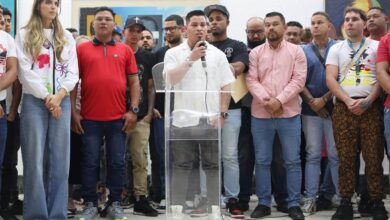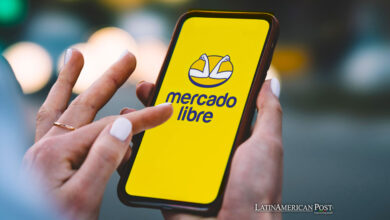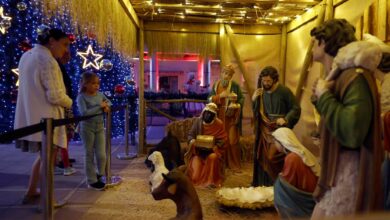Everything you need to know about the space debris laboratory in the Netherlands
In search of a solution to space debris, artist Dan Roosergaarde opened this week the Space Debris Laboratory in Almere, the Netherlands

With the support of experts from NASA and the European Space Agency, artist Dan Roosergaarde, known for his projects that combine art and technology in search of a clean environment and space, aims to find a sustainable solution to more than 29,000 pieces of space junk.
Leer en español: Todo lo que debes saber del laboratorio de basura espacial en Holanda
According to the newspaper El País, the opening to the public of the Space Debris Laboratory took place on Saturday, October 6 in Almere, the youngest province in the Netherlands. There, Roosergaarde lit the skies with LED lights that pointed out the space debris between 200 and 20 thousand kilometers.
"It's as if the sea is full of ships that never return to port. At the end, world navigation would be paralyzed. If it is not cleaned, the space debris may end up plugging the orbits needed to launch new satellites. There are about 4,700 in space, of which about 1,800 work. Without forgetting the rubble that falls to the Earth, and the natural meteorites", warned Franco Ongaro, director of the European Center for Space Research and Technology at EFE.
Roosergaarde explains to EFE that his goal is to make people aware of this unknown reality, using art as a tool, while large institutions seek agreements and technicians and engineers find solutions.
Also read: Space debris: This is the satellite that could clean the space
"There is a total of eight thousand tons of things floating in space. It is all very dangerous, very expensive to clean, nobody wants to do it, everyone wonders who the problem is, etc. We are stuck. And if we continue like this, the garbage layer will be so intense that it will reach a point where we cannot send more satellites IGNORE INTO space", he explained.
This space junk is equivalent to the entire structure of the Eiffel Tower.
According to information from the newspaper El Mercurio, the laboratory will include, in addition to lectures, real pieces of space debris, such as the remains of a solar panel from the Hubble Space Telescope, provided by the European Space Agency, and an exhibition of objects showing the effects of space debris.
Listin Diario reports that from Sunday access to this space, located in the building of Kunstlinie Almere Flevoland (KAF), will be daily and free of charge for those students and visitors interested in research and in proposing a sustainable solution to this problem.
You may also be interested: We could know the solar system origin! The Hayabusa2 mission was successful
According to the official site of the laboratory, the visual shows will take place on the weekends of October 5-6, November 9-10, December 7-8, 2018, and January 18-19, 2019.
"Can we use space debris as a source of information to print houses on the moon in 3D or to make artificial shooting stars to replace the millions of euros we spend on fireworks at the end of the year?" Asks the artist Dutch.
"There are officials, experts from ESA, students with ideas, investors, etc. We are going to put them all in the same space and tell them, nobody is going to leave here until we have a solution", concluded Roosergaarde.
Latinamerican Post | Luisa Fernanda Báez Toro
Translated from “Todo lo que debes saber del laboratorio de basura espacial en Holanda”
Listen this article





